本文摘自ANSYS FLUENT 16.0帮助文档
The following guidelines can help you make sure your CFD simulation is a success. Before logging a technical support request, make sure you do the following:
1. Examine the quality of the mesh in Fluent.
There are two basic things that you should do before you start a simulation:
-
Perform a mesh check to avoid problems due to incorrect mesh connectivity, and so on. In particular, you should be sure that the minimum reported cell volume is not negative.
-
Look at maximum cell skewness (for example, using the Compute button in the Contours dialog box after initializing the model). As a rule of thumb, the skewness should be below 0.98.You can also use the Report Quality function to calculate the minimum cell orthogonality.You can find more details about mesh quality considerations in Mesh Quality in the Fluent User's Guide.
If there are mesh problems, you may have to re-mesh the problem.
1、在FLUENT中检查网格质量
在进行FLUENT仿真计算之前,有两件基本的事情需要做:
进行网格检查以避免由于网格连接错误所导致的问题。特别是,用户应确保网格中不存在负体积网格。
检查最大网格扭曲度(例如,在初始化之后,在Contours对话框中使用Compute按钮进行查看)。一般来讲,网格扭曲度应当低于0.98。用户也可以使用Report Quality功能计算最小网格正交性。更多的关于网格质量的细节说明可参阅FLUENT用户手册。
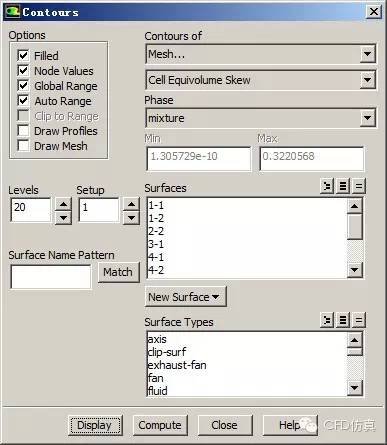
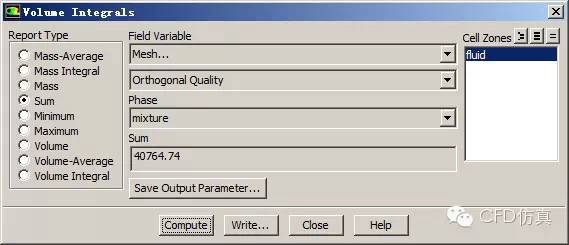
2. Scale the mesh and check length units.
In ANSYS Fluent, all physical dimensions are initially assumed to be in meters. You should scale the mesh accordingly. Other quantities can also be scaled independently of other units used. ANSYS Fluent defaults to SI units.
2、缩放网格并检查长度单位
在ANSYS FLUENT中,所有的初始尺寸单位都被定义为"米"。用户应当根据模型的实际尺寸对网格进行相应的缩放处理。其他物理量也可独立的进行缩放。ANSYS FLUENT默认使用国际单位制。
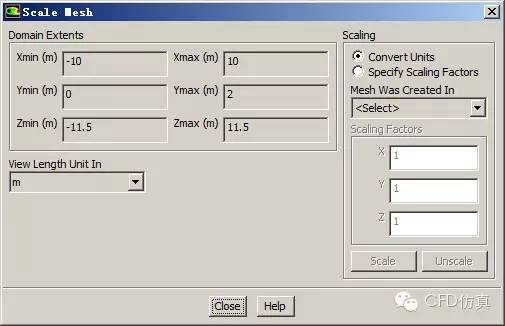
3. Employ the appropriate physical models.
3、选用合理的物理模型
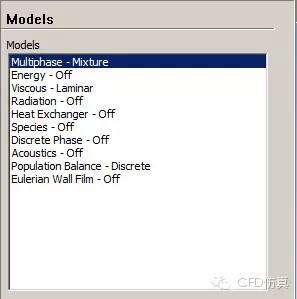
4. Set the energy under-relaxation factor between 0.95 and 1.
For problems with conjugate heat transfer, when the conductivity ratio is very high, smaller values of the energy under-relaxation factor practically stall the convergence rate.
4、设置energy项的亚松弛因子在0.95~1之间
对于涉及到共轭传热的问题,当传导率非常高时,小的能量亚松弛因子可能会导致非常缓慢的收敛速度。
5. Use node-based gradients with unstructured tetrahedral meshes.
The node-based averaging scheme is known to be more accurate than the default cell-based scheme for unstructured meshes, most notably for triangular and tetrahedral meshes.
5、当使用非结构四面体网格时,采用node-based gradients(基于节点的梯度算法)
对于非结构网格,采用基于节点平均的算法要比默认的基于单元的算法更精确,特别是对于三角形和四面体网格。
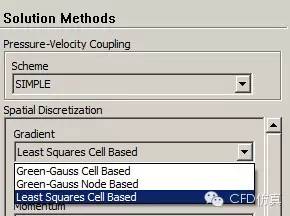
6. Monitor convergence with residuals history.
Residual plots can show when the residual values have reached the specified tolerance. After the simulation, note if your residuals have decreased by at least 3 orders of magnitude to at least 1e-3.
For the pressure-based solver, the scaled energy residual must decrease to 1e-6. Also, the scaled species residual may need to decrease to 1e-5 to achieve species balance.
You can also monitor lift, drag, or moment forces as well as pertinent variables or functions (for example, surface integrals) at a boundary or any defined surface.
6、监控残差收敛过程
残差曲线用于显示当残差值是否达到指定的收敛精度。当仿真计算结束时,需要检查残差是否已经降低到至少3个数量级(即1e-3)。
对于压力基求解器,能量项残差值必须降低至1e-6,组分项残差值需要降低到1e-5以达到组分平衡。
用户还可以通过监测边界或任何定义表面上的升力、阻力或力矩及其相关的变量或函数。
7. Run the CFD simulation using second order discretization for better accuracy rather than a faster solution.
A converged solution is not necessarily a correct one. You should use the second-order upwind discretization scheme for final results.
7、使用二阶离散进行CFD仿真计算,以获得比快速计算更好的计算精度。
收敛的计算结果不一定就是正确的结果,用户应该使用二阶迎风离散格式获取最终的计算结果。
8. Monitor values of solution variables to make sure that any changes in the solution variables from one iteration to the next are negligible.
8、监测求解变量的值以确保变量值的变化在两次迭代直接可以忽略不计。
9. Verify that property conservation is satisfied.
After the simulation, note if overall property conservation has been achieved. In addition to monitoring residual and variable histories, you should also check for overall heat and mass balances. At a minimum, the net imbalance should be less than 1% of the smallest flux through the domain boundary.
9、验证各物理量达到守恒
计算结束后,需要确保计算域内各物理量达到守恒。除了监控残差和变量值变化外,用户还应当检查系统内整体的热量和质量平衡。至少,通过计算域边界的通量净不平衡量应当小于1%。
10. Check for mesh dependence.
You should ensure that the solution is mesh-independent and use mesh adaption to modify the mesh or create additional meshes for the mesh-independence study.
10、检查网格依赖性
用户应当确保计算结果是网格独立的,并且使用网格自适应方法修改网格,或者创建额外的网格以进行网格独立性验证。
11. Check to see that the solution makes sense based on engineering judgment.
If flow features do not seem reasonable, you should reconsider your physical models and boundary conditions. Reconsider the choice of the boundary locations (or the domain). An inadequate choice of domain (especially the outlet boundary) can significantly impact solution accuracy.
11、基于工程经验判断计算结果的合理性
如果流动特征看起来不合理,用户应该重新考虑物理模型和边界条件,重新考虑边界位置(或域)的选择。计算域的大小的选择不足(尤其是出口边界)会显著影响计算结果的准确性。
You are encouraged to collaborate with your technical support engineer in order to develop a solution process that ensures good results for your specific application. This type of collaboration is a good investment of time for both yourself and the ANSYS Fluent support engineer.
本篇文章来源于微信公众号: 南流坊








评论前必须登录!
注册